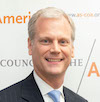This week’s announcement that Pope Benedict XVI has resigned and will relinquish his official papal duties at the end of the month has brought into relief the important role of the Catholic Church in Latin America, and the important role of Latin America in the Catholic Church. Home to over 40 percent of the world’s Catholics, some Latin Americans are suggesting that the next Pope to be elected should—for the first time in history—come from outside Europe and, specifically, that he should come from Latin America.
Whatever the merits arguing in favor of a geographic approach to Church leadership, the discussion highlights an important point: increasingly, the vibrancy of the Catholic Church is coming not from its traditional base in Europe and North America, but from developing regions of the world.
Much as a shift in broader global governance is underway, with power diversifying from north to south, this pattern is being repeated in the religious sphere as well—not just in the Catholic Church, but even more so in Protestant evangelical churches.
For years, the growing influence of evangelicals across Latin America has been noted by observers. Adherents have multiplied dramatically, building on a base established primarily but not exclusively from North American missionaries working within the region. But the pattern of evangelization is rapidly changing. In fact, according to Dr. Rodolfo Girón, for many years a pioneer in Latin American missions, the mentality of Latin American evangelical churches is changing from being receivers of missionaries to being senders of missionaries.
This is revolutionary. As the Church matures across the region, Latin America today is not solely a mission field, but also now a growing source of gifted, qualified and capable missionaries throughout the Western Hemisphere and indeed to other parts of the world.
In 1987, for example, Latin missionaries numbered approximately 1,350, according to Latin America Mission statistics. Today, that number is in excess of 16,000, perhaps evenly divided between those working in Latin America and those working outside the region, in areas as far afield and often difficult for North Americans to reach as Russia, Africa, and the Muslim world. Current trends show no signs of slowing, lending a powerful and uniquely Latin American voice to the global missions movement.
It’s just one more example of how the world is changing rapidly. As the Cardinals convene in Rome to choose a new Pope, this will be an important and relevant point to consider.




